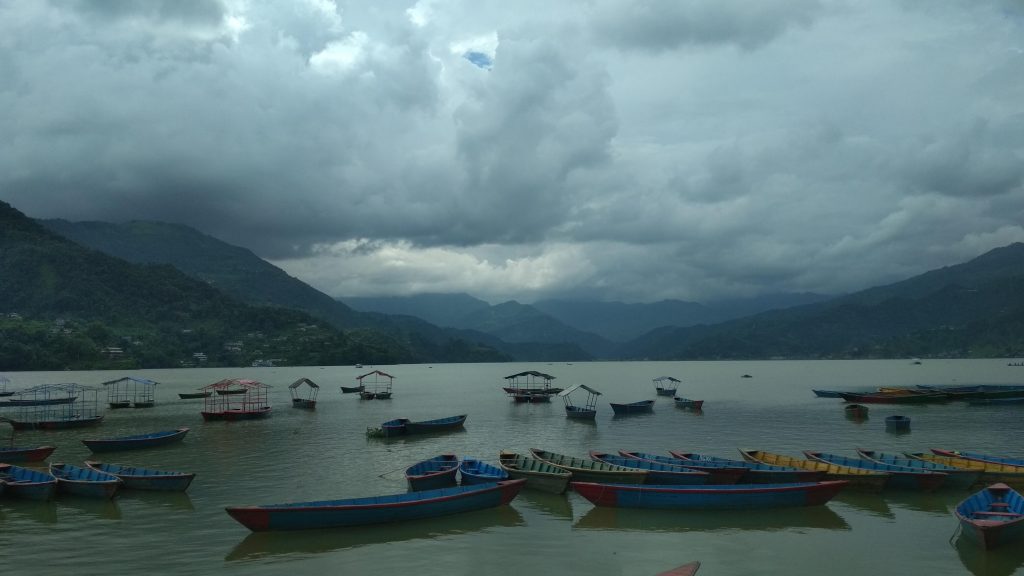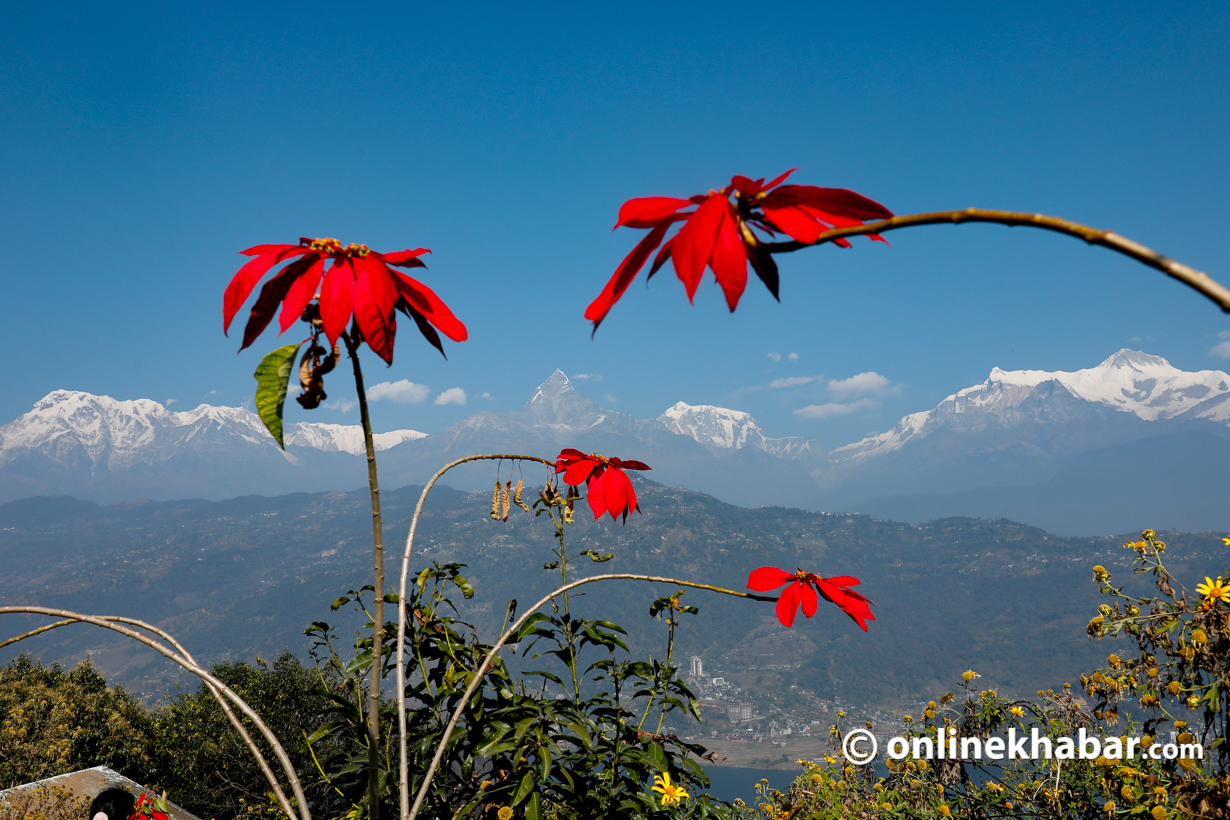
In recent days, Nepal, particularly the picturesque city and tourism capital of Pokhara, has been grappling with a worsening air quality crisis exacerbated by pollution and widespread forest fires. The Kaski region, home to Pokhara, has been enveloped in thick smog, significantly impacting the country’s environmental landscape.
This environmental challenge has had tangible consequences, such as disrupting air travel, with only a fraction of scheduled flights managing to depart recently.
Out of the scheduled 33 flights departing from Pokhara, only three managed to take off recently due to poor visibility. Flights from different routes including Kathmandu to Pokhara were affected.
This situation has shown the urgent need for concerted efforts to address the root causes of air pollution and safeguard public health in Nepal.
Government’s lack of interest

The Government of Nepal has officially proclaimed Pokhara, the capital city of the Gandaki Province, as the tourism capital of Nepal. However, during the spring, one of the country’s peak tourist seasons, the bowl-sized city is blanketed in smog and haze. Flights are cancelled or delayed due to the poor visibility caused by the haze.
“Foreign tourists are reluctant to go on sightseeing tours when the skies are covered with thick smog,” said Ananda Gurung, President of Pokhara City Tour Guide Association. “Pollution could soon emerge as a big problem. Tourists have started to shorten their stays,” according to Gurung.
Pomnarayan Shrestha, President of the Pokhara Tourism Council, said if the Government does not act on time, pollution could have serious consequences for Pokhara’s burgeoning tourism industry.
According to the Forest Division Office, Pokhara, wildfires have spread in 5,000 hectares of forests since February. In addition, farmers in most of the Southern Tarai plains (a lowland region in Nepal running parallel to the lower ranges of the Himalayas) light farm fires before planting maize. Experts said that Nepali farmers too started to use fire to burn vegetation due to the shortage of manpower to collect the straw. In past years, the majority of farmers did not burn vegetation and preferred to handle straw in other ways to feed their livestock.
In Nepal, spring is known as the season of “dadhelo” (wildfire), a time when burning waste is a common method of disposal. Unfortunately, these fires can spread easily to the forests due to the absence of firebreaks and other preventive measures.
The Department of Forests and Soil Conservation reports that human actions, ranging from deliberate burning to discarded cigarette butts, are often the cause of these forest fires. Poachers also contribute to this issue by starting fires to trap and poach wild animals. While locals sometimes set fires to encourage new growth and clear debris, the lack of proper training and resources means these fires can quickly grow out of control. Additionally, communities often lack the necessary technology, equipment, and knowledge to combat and control forest fires when they are still manageable.
No prioritisation
The response to the fires has been staggering, largely due to the insufficient budget allocated for wildfire management. The National Disaster Risk Reduction and Management Authority, for instance, was allocated only Rs 5 million for the fiscal year 2022/23, while the Ministry of Forests set aside just Rs 22 million for the same purpose.
This limited budget has hindered institutions from purchasing essential equipment, such as portable water pumps, and conducting proper and regular training for personnel, exacerbating the issue of a lack of qualified individuals to fight the fires effectively.
Nepal has also been unable to utilise innovative scientific techniques due to the lack of technical expertise. These techniques could have significantly aided in preventing and adequately preparing for the damages caused by forest fires. Nepal’s approach to forest fire management is hindered by the absence of a clear policy, leading to confusion regarding responsibility and coordination among relevant departments.
The Forest Fire Management Strategy of 2010, the primary document addressing forest fires, has been found lacking in preventive measures and only satisfactory in remedial actions. The other provisions regarding forest fire management are scattered across different sectoral agencies, making policy coordination and integration challenging.
Further, while different policies, such as the National Climate Change Policy, 2019 allude to controlling forest fires, they do not explicitly mention the term, confusing jurisdiction. There has been little to no attention given to clarifying and amending policies, causing departments to function in silos, with Nepal not having a separate department for forest fire management.
Initiations to be taken
Keeping in view the preventable loss of life and properties caused by wildfires every year, the government must take urgent action to prevent wildfires in Nepal. It is essential to recognise that wildfires are preventable, and human negligence is one of the primary causes of these incidents.
Human negligence, including activities like smoking near vegetation and discarding cigarette butts in dry areas, is a primary cause of wildfires. The government must ensure that people are aware of these risks and take preventive measures to minimise them.
While the government has taken some steps, such as creating the Forest Fire Detection and Monitoring System and including wildfire control programmes in the Ministry of Forest and Environment’s annual plans for the fiscal year 2022/23, more action is needed. The government should prioritize high-risk areas and implement preventive measures like building firebreaks, cleaning and repairing fire-damaged areas, and controlling bushfires. Additionally, the government must ensure that firefighting equipment, such as fire beaters, forestry rake hoes, forestry rakes, and firefighter’s helmets, are purchased and distributed at the local level.
Awareness programmes should also be launched at the community level to educate people about the dangers of human activities that can cause wildfires. Incentives could be provided for reporting individuals engaged in such activities. It is crucial to understand that wildfires not only cause immediate damage but also have long-term environmental effects, including pollution from wildfire smoke and haze, which can harm residents’ health.
The environmental crisis in Pokhara, characterised by worsening air pollution and widespread forest fires, demands immediate attention and concerted action from the government. The disruption to flights and tourism, coupled with the long-term environmental and health implications, underscores the urgency of implementing effective environmental laws and policies.
To address the root causes of these challenges, the government must prioritize wildfire management, allocate sufficient resources, and enhance coordination among relevant departments. Nepal, a country known for its natural beauty and sight-seeing and yet the capital (Kathmandu) being ranked as the most polluted city in the world, creates an obligation towards the government and its people to mitigate the impact of environmental degradation, protect its natural resources, and ensure the well-being of themselves and the future generation.























